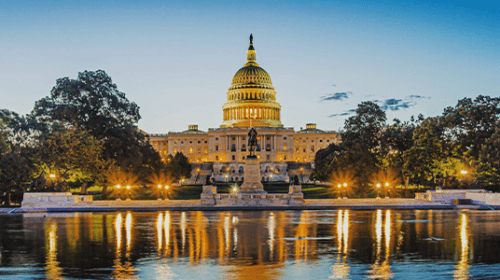Key Points:
- Panic attacks are random, intense, and unrelenting.
- Panic attacks can be effectively managed with strategic breathing exercises.
- Panic attacks can be helped by exercise, diets, and avoiding stimulants.
- Long-term care for panic attacks requires group and individual therapy.
A “panic disorder” is a specific kind of anxiety disorder, and a “panic attack” is an acute panic disorder experience. Around 2.7% of US adults have experienced symptoms of panic disorder in the last year.[1] The experience of panic disorder is characterized by random, intense, unrelenting fear.
The symptoms of panic attacks may include:[2]
- Chest pain
- Irregular heartbeat
- Shortness of breath
- Dizziness
- Abdominal pain that continues for more than 24 to 48 hours
Panic attacks come from nowhere and sometimes disappear as quickly as they emerge. But, when someone is experiencing a panic attack, it feels like it will never end. There are many practical strategies that can help you manage and recover from panic attacks, some of which you can do on your own and others that are part of a treatment program.
Practice Breathing Exercises
Good breathing exercises are the most helpful tactic to employ at the moment when a panic attack springs from nowhere. First, it’s important to note how breathing works before we explain how to breathe to relieve anxiety.
When you breathe, your body is taking in oxygen on inhale and releasing carbon dioxide on exhale. When you hyperventilate (like in a panic attack), your body absorbs too much oxygen. The effect is respiratory alkalosis.[3]
Holding your breath actually allows more carbon dioxide and oxygen to get absorbed into red blood cells. Based on a style of breathing specific to the ancient yogic breathing techniques called pranayama, there is an exercise called “4-7-8 breathing control.” This can lower the oxygenation of the blood during panic attacks.[4]
The four-part exercise goes like this:
- First, let your lips part. Exhale completely through your open mouth.
- Now, close your lips and softly inhale through your nose for four seconds.
- Then, hold your breath for seven seconds (the most important step).
- Lastly, open your lips. Exhale completely from your mouth for eight seconds.
- Repeat steps as needed.
If you practice this every day, it should help you prevent panic attacks and/or suppress them when they do happen. There is also evidence to say the 4-7-8 technique should help you get better sleep.[5]
Physical Exercise
Stress is likely an environmental factor in panic attacks.[6] Cardio and aerobic exercise reduce the stress hormone levels of cortisol and boost the levels of feel-good endorphins, which stimulate the release of dopamine.
When you do good things for your body, your brain rewards you with good feelings. When we engage in activities like eating, physical exercise, and sex, our brain rewards us. Physical exercise should help you to manage stress levels and release tension.
Make A Schedule
As our parents said, “Those who fail to plan plan to fail.” Make routines, and stick to them.
We feel most at peace when we know what to expect. If we are living in a state of constant anxiety due to planning failure, anxiety will be more common. When we create routines, our brain can know what to look forward to next.
Creating traditions is more than just planning family road trips. Small weekly traditions are also an olive branch to our brain’s capacity for anxiety. Even if it’s just planning one day a week to be the grocery store day, that helps your brain prepare for the future.
Stable Diet
Eating a stable diet regarding the quality of food, type of food, and total calories consumed is critical to keeping your blood sugar levels stable.
If your blood sugar gets low, your body will tell your liver to start cranking out more blood sugar. To do that, it releases epinephrine (aka adrenaline).[8] So, if you’ve ever had low blood sugar, your palms might get sweaty, feel a little woozy, and your heart starts beating faster.
If your blood sugar stays too low for too long, your body must secrete more hormones to alleviate the low blood sugar. Cortisol (aka the stress hormone) is another hormone that helps control blood sugar levels.[9] Now, you have adrenaline and stress together. That is a ripe environment for a panic attack.
Avoid Stimulants
Stimulants like caffeine, alcohol, and smoking can worsen panic attacks because they signal the brain to increase the levels of the neurotransmitter norepinephrine.[10] Norepinephrine is associated with the “flight/fight/freeze” response.
Norepinephrine is a neurotransmitter that can hang out in between the synapses in-between neurons. Having elevated levels of “flight/fight/freeze” can be a factor in panic attacks.
Support Groups
When navigating how to recover from panic attacks, you don’t have to do it alone. The best part about being in an anxiety support group is that you will be in a judgment-free community of people who are all struggling with the same thing. There are many anxiety support groups to attend. Consult your treatment team to see if there are any panic support groups with whom they have a referral relationship.
Support groups meet either weekly or multiple times a week. They are a safe space for you to share your struggles and experiences. None of your struggles are going to be unfamiliar to anyone who is there.
Cognitive Behavioural Therapy (CBT)
CBT is the fancy name for talk therapies that focus on minimizing unwanted thoughts and replacing them with objective, realistic thoughts. CBT is excellent for the long-term management of panic attacks and overall panic disorder.
The best evidence suggests that combining pharmacological and CBT treatments works in around 80% of patients who suffer from panic disorders.[11] Around 66% of patients with dual treatments have remission for up to six months at a time.[12]
There are many different kinds of CBT, but several could be more effective at treating anxiety than others:
Mindfulness-Based Cognitive Therapy (MCBT)
One potentially helpful one is mindfulness-based cognitive therapy. Mindfulness cultivates a present-oriented attitude via meditation. Anxiety often occurs when a person begins to worry about a future-oriented event. Mindfulness could help channel anxious thoughts away from overwhelming our present.
Rational-emotive behavior therapy (REBT)
Rational behavior is based on accordance with reason. Without getting too deep into the weeds when it comes to who gets to define “reason,” there is a generally accepted reality that we all agree to share. REBT challenges negative self-thoughts and replaces them with more realistic ones. Anxiety over future events can be replaced with constructive thoughts about what you can do to prepare (if anything) for them.
Recovery From Panic Attacks Is Possible
We know this experience can be overwhelming. You don’t have to walk this path alone. Contact Recovery Unplugged and begin your healing journey.
Sources:
- [1][2] U.S. Department of Health and Human Services. (n.d.). Panic disorder. National Institute of Mental Health. https://www.nimh.nih.gov/health/statistics/panic-disorder
- [3] Respiratory alkalosis – statpearls – NCBI bookshelf. (n.d.). https://www.ncbi.nlm.nih.gov/books/NBK482117/
- [4][5] Vierra, J., Boonla, O., & Prasertsri, P. (2022, July). Effects of sleep deprivation and 4-7-8 breathing control on heart rate variability, blood pressure, blood glucose, and endothelial function in Healthy Young Adults. Physiological reports. https://www.ncbi.nlm.nih.gov/pmc/articles/PMC9277512/
- [6][7] U.S. Department of Health and Human Services. (n.d.). Panic disorder. National Institute of Mental Health. https://www.nimh.nih.gov/health/statistics/panic-disorder
- [8] U.S. Department of Health and Human Services. (n.d.-b). Panic disorder: When fear overwhelms. National Institute of Mental Health. https://www.nimh.nih.gov/health/publications/panic-disorder-when-fear-overwhelms
- [9] Dungan, K. M., Braithwaite, S. S., & Preiser, J.-C. (2009, May 23). Stress hyperglycaemia. Lancet (London, England). https://www.ncbi.nlm.nih.gov/pmc/articles/PMC3144755/
- [10] Sofuoglu, M., & Sewell, R. A. (2009, April). Norepinephrine and stimulant addiction. Addiction biology. https://www.ncbi.nlm.nih.gov/pmc/articles/PMC2657197/[11][12] Panic disorder – statpearls – NCBI bookshelf. (n.d.-a). https://www.ncbi.nlm.nih.gov/books/NBK430973/

























